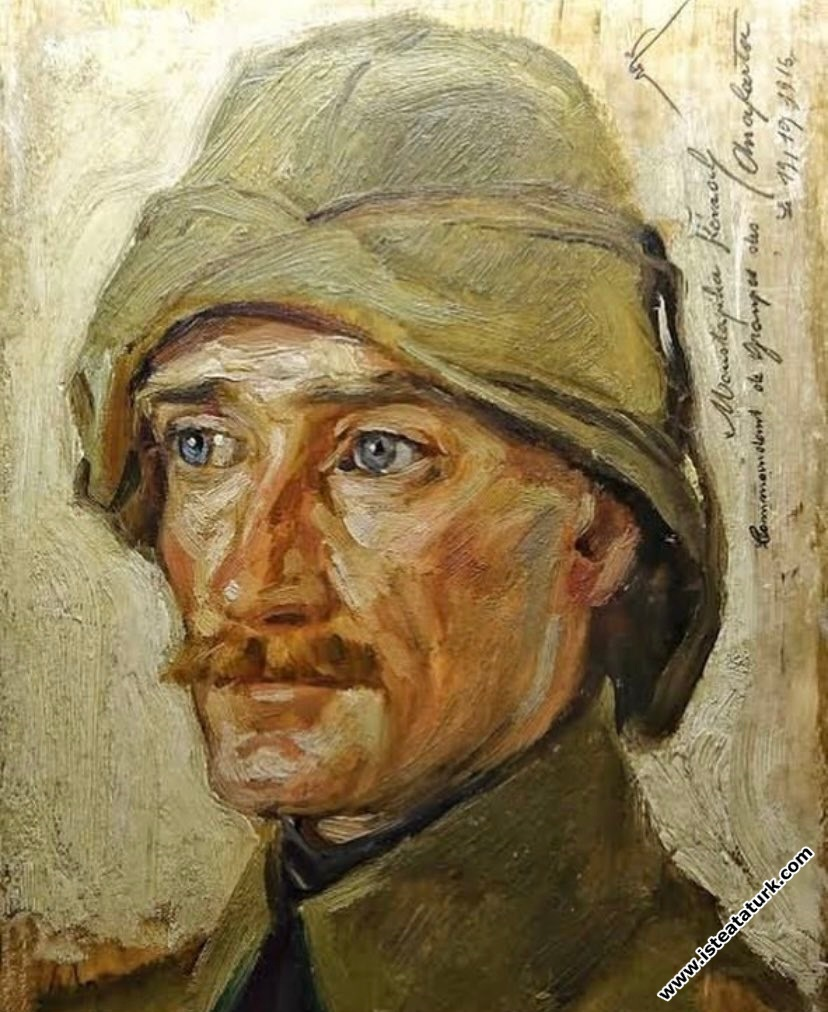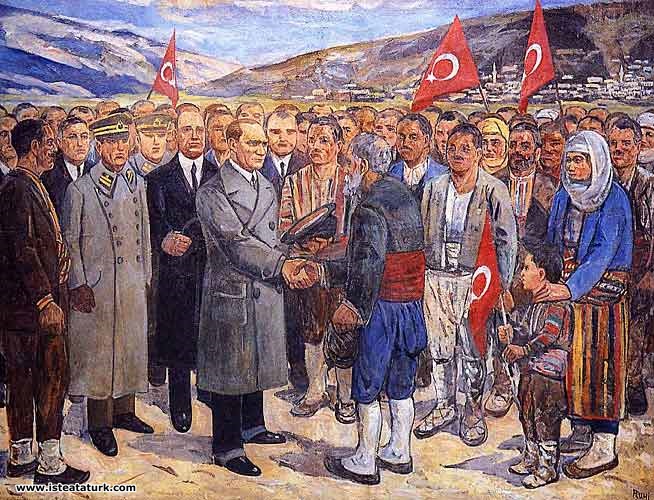Nazmi Ziya Guran, Atatürk, 1926
Character Size
Atatürk painting, 1926, oil painting, 146 x 96.5 cm.
Painter Nazmi Ziya Güran's painting "Atatürk" was made as an oil on canvas, measuring 146 x 96.5. The work is in the collection of MSGSÜ Istanbul Painting and Sculpture Museum.
NAZMI ZİYA GURAN (1881-1937)
Nazmi Ziya Güran was born in Istanbul.
Our painters of this period are called the "1914 Generation" because the first Turkish painters went to France to receive painting training, and with the outbreak of the First World War in 1914, some of them abandoned their education and returned to Turkey in 1914.
Among the 1914 generation “Turkish Impressionists”, it is the name closest to this adjective. He has become one of the milestones of Turkish painting with his extraordinary performance in the landscapes of Istanbul, which he has been passionately oriented towards throughout his life.
He spent his childhood and youth in Aksaray Horhor, where he was born. Nazmi Ziya Güran, a descendant of Molla Gürani, who was the teacher of Fatih Sultan Mehmet, graduated from Mülkiye upon the insistence of his father Mehmet Ziya. He started working at the Grand Vizier's Office the year he graduated from the Civil Service. But his mind was always in the art of painting. The death of his father in 1902 strained his freedom to decide according to his own wishes. Also, his uncle, Major Hasip, one of the military painters, was very influential in his becoming a painter. Nazmi Ziya Güran enrolled in the Industry-i Nefise School, as it was then known.
In 1902, he had the opportunity to work with his school teachers, Salvatore Valeri, Vernier and Osgan Efendi, and took private painting lessons from Hoca Ali Rıza. He met the famous French painter P. Signac, who visited Istanbul in 1905. This led to radical transformations in the art of dating.
After completing his education in 1908, he went to Paris by his own means. Meanwhile, in 1910 Venerable Resne Lodge was inducted. He had two daughters with his workshop friend Marcelle Chevalier, whom he married in 1911 in France. His wife was also an artist like himself. Nazmi Ziya Güran attended Julian Academy for about three years. In addition, she took private painting lessons from teachers such as Marcel Bachet and Royer. During his studies in the workshop of Cormon, who was the most favorite teacher of that period, his interest in landscape painting began to become evident.
We do not know exactly what Nazmi Ziya did in her teacher Fernand Cormon Workshop. But Hodja Ali Rıza, whom he took lessons from before, said, "Nature is the best teacher." With his philosophy, Paris can be thought of as his opposition to his disciplined, strict workshop education in his outdoor landscapes on the banks of the Seine.
Impressionism, which was born in France, was appreciated more than the use of paint, large brush strokes, realistic (Realist) and academic works. This style was also adopted in Turkey and caused the art of painting to become widespread. Since the paintings made with the use of abundant paint and large brush strokes seem more alive from afar, there has been a misconception in the society that the paintings should be viewed from afar due to such paintings.
When Nazmi Ziya returned to Turkey in 1913, he was recruited to the Academy staff. He was the director of the Academy twice, the first between 1918-1921 and the second between 1925-1927. Our brother is the name closest to this adjective among the "Turkish Impressionists", also known as the 1914 generation. He has become one of the milestones of Turkish painting with his extraordinary performance in the landscapes of Istanbul, which he has been passionately oriented towards throughout his life. He drew attention by making the same painting over and over again in different time periods. According to rumors, he even made the same painting fourteen times.
The small paintings he made in Paris were admired in our country, and one of his paintings was bought by the Afghan King Emanullah Khan, who came to visit our country in 1928.
Nazmi Ziya Güran received an offer to open a solo exhibition on the two-storey left of the Fine Arts Academy Director, Burhan Toprak, within the framework of the Istanbul Festival. He opened his first and last exhibition at the Academy of Fine Arts on August 17, 1937. The artist, who exhibited his thirty-five-year effort with 300 works, was unable to sell any of his works here. He died on the night of September 11, 1937, due to a heart ailment, while this exhibition was still going on. He was 56 years old when he died. After the exhibition, there was no chance to see the book written about it.
It is said that the artist, who has an interesting personality, never wears a tie and always wears a bow tie. Another feature is that he never smoked and never dropped the pipe from his mouth, his best friend was Arif Bedii Kaptan.
During the armistice years, the artist, who raised chickens in his house in Çamlıca to provide for his family, also tried shoemaking.
Source: www.turkishpaintings.com

